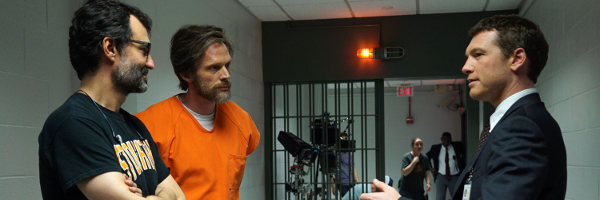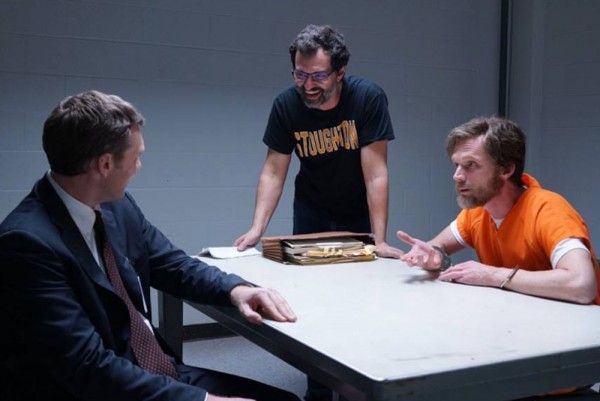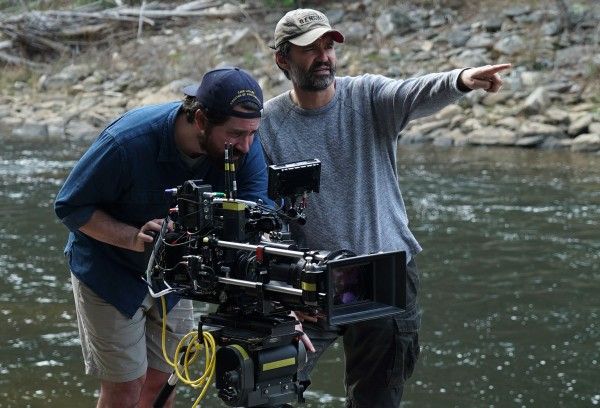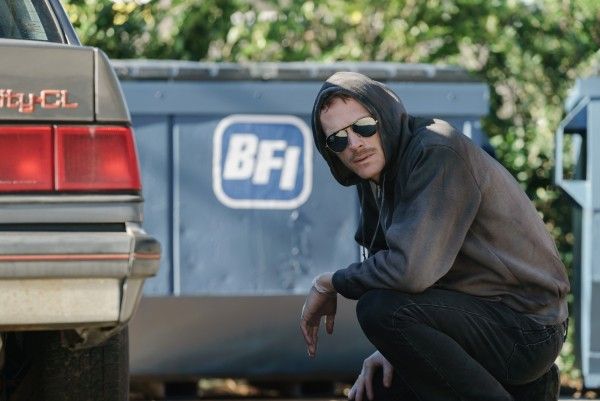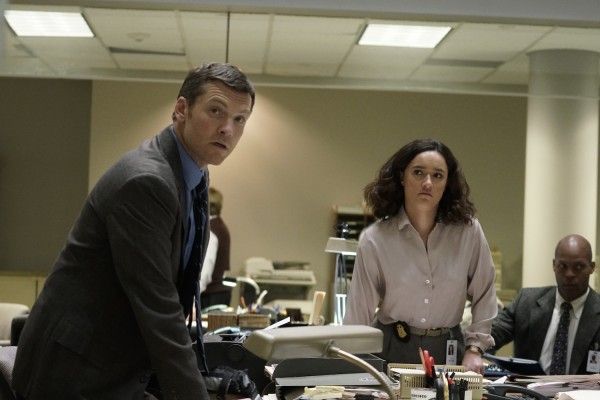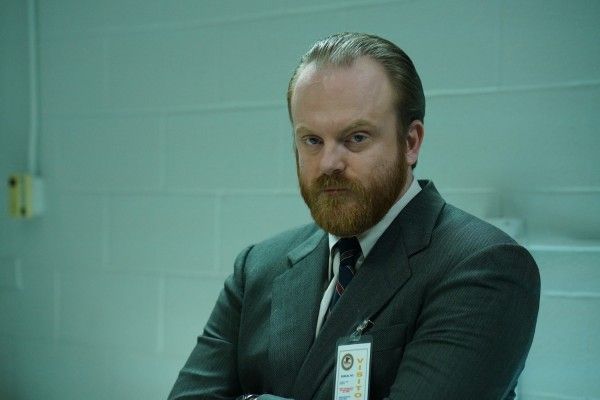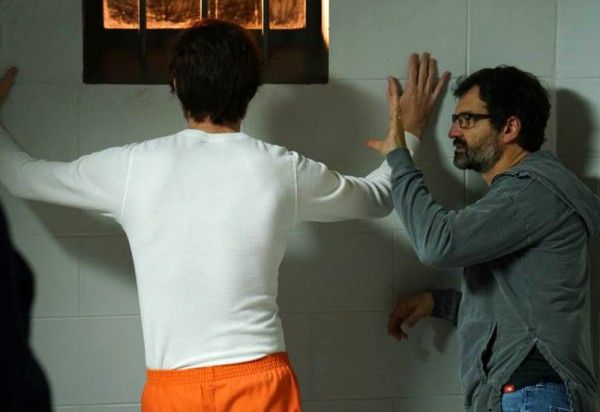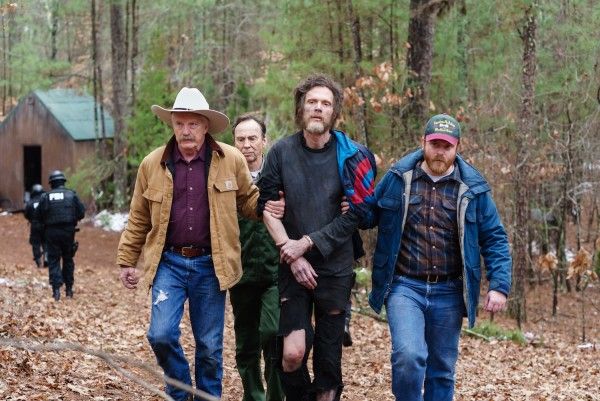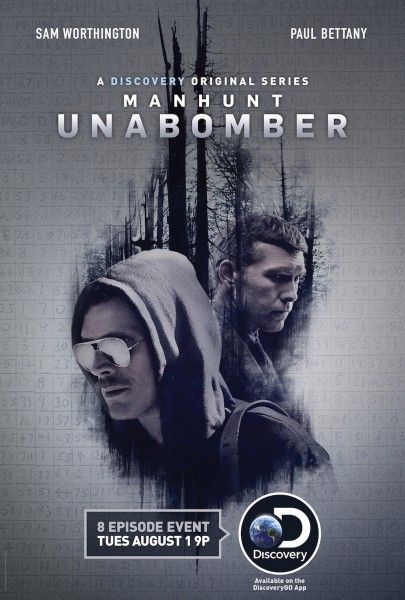As part of my job covering television, I get the opportunity talk to a lot of people behind the scenes, whether it’s showrunners, directors, producers or writers, who are responsible for bringing the programming we all watch, love and talk about to viewers. One of my favorite creatives to talk to, over the last few years, has been Greg Yaitanes, who has served as showrunner, executive producer, producing director and director for hire on various TV series, including House, Banshee, Quarry and, most recently, Manhunt: Unabomber. He always has great insight into the productions he’s involved with, and I think it makes the projects themselves that much more interesting.
During this 1-on-1 phone interview with Collider, Greg Yaitanes talked about how he came to Manhunt: Unabomber (which he directed all eight episodes of), what he’s most proud of having accomplished with the series, what most impressed him about the work that Paul Bettany (as Ted Kaczynski) and Sam Worthington (as Jim “Fitz” Fitzgerald) did in their roles, how he prefers to approach a shooting schedule, his favorite moments in the series, the insight he got into the unabomber, and how the series could possibly continue. He also talked about what he’s doing next, how he wants to move forward with his career, why he’d consider doing a revival of House (not that anything has been seriously talked about), and why the job of producer/director is critical to TV shows.
Collider: How did this come your way, and how much did you get to read?
GREG YAITANES: There was a single pilot script. My agent also represents (creator) Andrew [Sodroski]. I explained what I was looking for next and he said, “You should take a look at this.” When I read it, I thought it was fantastic, but my first question was, “Is this real?” I thought I knew the case. I was directing America’s Most Wanted in 1995, and I thought I remembered the unabomb case really well, but I had never heard of Jim Fitzgerald or seen him on any documentary. I read and digested a lot of material on the unabomber because I was fascinated by society and the cultural fascination of it. I was in D.C. and working in law enforcement, at the time, so it was interesting. I thought this was a created character, like Mark Wahlberg’s character in Patriot’s Day. I thought Jim Fitzgerald was just a way to finally tell the unabomber story. And then, they sent me this 20-page chapter of a larger book that was individual profilers talking about a meaningful case of theirs, and there it was. The whole season was right there in front of me, in terms of how they used language and the big moves. Directing all eight of these, every episode was like a pilot because there was no road map for us to go on, in creating this. It was all of that colliding to be able to tell something where we can really hang our hat on how factual and accurate the story is.
Looking back on this series, as a whole, what are you most proud of having accomplished with it? What do you feel are your biggest personal achievements on this production?
YAITANES: This is the third time I’ve directed the entirety of a series, and I find that always a great physical accomplishment, as well as an artistic accomplishment. Within [Manhunt: Unabomber], particularly Episode 6 is probably the most meaningful to show that we’ve been talking about a character and created a character and bore witness to a character that is entirely human and goes through much of the same things that everybody else does and isn’t that different from everybody else. Seeing that reaction in that particular episode, Andrew’s writing, Paul’s work, and the work of the rest of the cast was really the most rewarding part of this. I’m pleased how we wrap up the show in an exciting way with a chapter that nobody knows about. Nobody knows how close he came to walking. John Hinckley is on supervised release right now, and he tried to assassinate the President. That could very well have been Ted Kaczynski today. There was no guarantee that they were going to put him behind bars.
Throughout the season, the storytelling jumped around in time. Why did you want to tell the story that way?
YAITANES: That was by design. There really isn’t going to be much mystery in if they caught the unabomber, so we wanted to pretty immediately diffuse what could just be a quick Google search to find out how the story ends. It wasn’t about that. It was really about the how. The most interesting hour of the O.J. documentary was after the trial. I had no idea there was a whole life that happened after the not guilty verdict, and that’s the case here. The arrest is really the beginning of the story. As exciting as it is to get the victory of how he was caught, it was very real that Ted Kaczynski almost walked. Bill Cosby was acquitted. John Hinckley is on supervised release, and he shot the president. O.J. walked. The Menendez brothers had a hung jury. It was very real that Ted was gonna walk, and Ted’s strategy was dead-on right. Had there not been some questionable ethics during the trial, it’s very possible that Ted could have gotten the search warrant thrown out and the Unabomber could have just walked out the front door. It was really crazy. Being able to tell those stories simultaneously was important.
There’s something so electrifying about watching Paul Bettany and Sam Worthington together.
YAITANES: It’s funny, when I saw Heat, I was always disappointed that Michael Mann hadn’t framed Pacino and De Niro in the same shot together. If you notice, the first time they meet, that two-shot was one of the first images I wanted to use. I just wanted you to be able to relish these two great actors in frame together. I had a still photo that a set photographer took of De Niro and Pacino talking, but it was never in the movie. I had that up in the writers’ room for inspiration. And I had a photo of Will Farrell as Ted Kaczynski, for what can happen if we don’t get this right. I was trying to thread the needle within that space.
How did you cast these two roles?
YAITANES: It’s interesting, it started with Discovery. Discovery was like, “We want big stars for this. We want a great cast. We want to go for it. We feel this is great material.” And I felt it was great material. When (casting director) John Papsidera came on, he recognized it was great material. We did not have any problem getting anybody to engage. It was really fantastic. When you hear Sam talk about what he was looking for, this was the perfect thing for him. And then, we were looking for Ted and looking for someone that could capture the empathy of Ted, and not just the oddness and otherness of Ted, and the second Paul came up, I was like, “That’s it!” Sometimes you feel fated to work with an actor, and Paul was definitely one of those people.
What did you think when you saw what Paul Bettany had put himself through for this role?
YAITANES: It was what you hope for. I’ve seen a lot of people that I’ve been excited to work with not take what they’re doing very seriously, and that disappoints me. Sam and Paul kept me on my game. I often feel like I’m the person working hardest on a show, and when I see people that are working as hard or harder, and we all have each other’s backs, that’s so invigorating and inspiring. Every day, you’re like, “How far can we take it? How much can we do?” And Paul was great. We would get together in the morning, before the crew even came in, and just talk about the day and what we hoped to achieve. Paul would give me things that I just didn’t imagine, and you have to be watching, as a director. You can’t just watch the monitor. You have to watch them. I also wanted to be sure to be a sounding board because they were new to the medium and the medium moves very quickly. Quickly and doing your best work don’t often go together, so the things was getting them and helping them to take their process and give them some efficiencies and short cuts to get to that good work. They quickly saw that this wasn’t something where anybody could indulge in a lot of talk about it. We just had to be in a stage of doing and working from your gut.
That’s how I chose to work on this. We had too short of prep to prep it at the level of detail that I have in the past, so I went for a much more instinctual set up for what was happening in each scene. It was an interesting way of working for me. I’ve done this for 25 years, so I feel like I can work, act and think quickly, and that’s what you’re seeing. We had an amazing make-up team. It was important that it was the spirit of the photos. I think if we had portrayed it as the photos, it would have been too much. It was about the degree with which you were portraying the accuracy and being okay with that. Where I land is, do you buy it? Do you believe this is the essence of Kaczynski? I looked at what Oliver Stone did on Nixon and how he took Anthony Hopkins and captured the inner life of Nixon. That’s what was important. We had unprecedented access to the case. We had an unpublished autobiography of Ted’s, we had access to the case files, and we had research to things the public has never seen because it was all pre-internet. The www.FBI.gov site was only two months old.
We know that Paul Bettany and Sam Worthington are great actors, but the performances that they give in this are some of the best work of their careers. What most impressed you, in watching what they did, above and beyond what you expected to get from them?
YAITANES: Well, I expected to get this from them. I love transitioning feature film actors into television. I’ve done that many times, whether it was Geena Davis or Glenn Close or William Hurt, or people that would then go on to be great feature actors, like Emma Stone or James McAvoy. They did everything that I expected them to come to the table with. They brought an A-game like no other. The thing that really impressed me for Sam was just the level of preparation he does. The way that he tracked those eight scripts, which we shot entirely out of sequence, was really something to admire, to keep that straight and to really make sure that he always knew where he was in the story, what the theme of that episode was, and where he was as a character. He is impressive. The results I expected. The way everybody works, you never know until you get into it. You just see that everybody is bringing their best, every day.
And with Paul, here he was playing a deeply conflicted character, and one of the great surprising things is that he’s also a director and he comes in asking how he can help. He wants to help you achieve what you need to achieve, and that’s such a great way to come into a day of work. It was great because each actor complimented them, and then watching them work together was great.
You mentioned shooting this out of order. Would you have wanted to shoot these eight episodes in order, if you could have?
YAITANES: No. What I like to do, and what I did on Quarry and Dune, was to go into a location and shoot in sequence, once I get to the location. When we shot the downstairs interrogation scenes, I shot those in sequence. I did that in each location that spanned the whole series. When we got into the UTF, we shot everything in sequence there because there was no reason not to. That just allows us to really be able to see how all of those scenes are going to play, when you’re doing the office scenes across eight episodes. That’s really great. I like to inhabit one location and live there for a while. The schedule was front-loaded with Ted, specifically the cabin and the arrest, and then we strategically made the trial Paul’s last work.
Is there anything you would have done differently, if time and budget weren’t considerations?
YAITANES: I definitely feel I told the story that we wanted to tell. I didn’t feel like I wanted for anything. I always would like more time. There’s always days where you want more time to attack things more to sink in. Prep was very short on this, and I’m really pleased. The show kept telling me what it wanted to be. The process is very interesting when you do a whole series without a pilot to work from. With a pilot, you get to shoot it, step back and look at it and see what it needs, and you can hone that as you go on to the series. As a whole, this show kept wanting to be about these two men and their mirrored lives, and it wanted to miniaturize into what they were doing. That was really interesting. We knew we were going to do some of that, but the amount that we did it really surprised me. You just kept wanting to get in there with them.
One of my favorite moments in the series is when Fitz brings Ted in and shows him that they have his cabin, and they’re just sitting in it and having a conversation. Did you have a favorite moment or scene, throughout the production?
YAITANES: I do, but it doesn’t involve Sam and Paul. The last few days of shooting was all of the Harvard Ted and Brian D’Arcy James work, and I just really loved the intimacy of those days. Another day I really liked was when we stripped away a lot of the crew and went in with a very small crew and shot Ted’s work from Episode 6. That was also really great. Sometimes bigger isn’t better and you want that intimacy on set. I loved being out in nature. That was something that we are desperately lacking, in all our lives. Essentially, I spent a month in the woods and I never have felt better, in my life.
If circumstances had been different and he would have been willing to meet and have a conversation, would you have even wanted to talk to Ted Kaczynski, or do you prefer to keep that distance?
YAITANES: I prefer the distance. I didn’t feel compelled to sit down with a serial killer. I couldn’t see what that would do for me. I wouldn’t want to energetically be in that close proximity to someone like that. However I humanized or created empathy for Ted, largely out of Andrew’s writing, I never lost sight of the fact that this guy was a serial killer. I didn’t need it for the research because Ted was so prolific with his writing. We had access to his unedited and unpublished autobiography, we had access to all of his journals, and we had access to the case files. I had a pretty clear picture of Ted’s intentions.
What was it like to read that autobiography?
YAITANES: It’s interesting, his autobiography is more combining the way he lived with what his philosophies are. What was more interesting were his journals. He had two separate journals. He had his Ted journal, which was about his life in nature, and that was very beautiful. You really see somebody who’s deeply pained when they cut the trees down, or they gauge into a rock face to quarry it. And then, he wrote in another journal in numeric code. It’s in an unbreakable cipher that was only able to be decoded because he had a handwritten key that he used when he wrote it. That was when he journaled as the unabomber. He actually created a numerical language to write about his experiments, which were his bombs, and how he felt as the unabomber. He really split himself into two distinct personalities and compartmentalized his life in a very particular way, not dissimilar to how the Nazi doctors worked. They could be the father of the year with the family, and then go kill children in the afternoon. They essentially doubled themselves in order to cope, and that was something that was very apparent in Ted’s journals. That was fascinating, to see the duality and the conflict of character. It was very Jekyll and Hyde.
When you have a show called Manhunt: Unabomber, that you could potentially continue this on to follow other manhunts. Is that something you’ve thought about, at all?
YAITANES: This was originally intended to be a limited series, and then Discovery saw an opportunity. If there’s a Season 2, we know what we would want to focus on. We’d love to look at how everybody reacted. What’s exciting is that we brought in a lot of new viewers to Discovery, and I don’t think that’s something anybody expected. A lot of people coming to the show have been people that don’t normally watch the network, so that was exciting. The idea is to an American-based manhunt, every season.
Would you want to sign on as a director again, or would you possibly just sign on as a producer?
YAITANES: I’d have to see what the circumstances are. I don’t want to rush as much as I felt I had to, from script to air with this. In order to keep the quality, you have to give it the time it needs. You can want for what you want, but ultimately, for me, I’d like to have a little less frantic experience, going forward. I poured that urgency into the show. So, if it goes forward and I want to do it, I’d love to see circumstances where we’re all on the same page about the story we want to tell and how to tell it. I’m not committed to a second season, at this point.
Do you know what you’re going to do next, or are you still trying to figure that out?
YAITANES: I’m going to go do an episode of Castle Rock in October, which will be fun. I’m very excited about that. But in terms of my next big endeavor, this time around, I really wanted to wait until I finished and assess. What doesn’t happen enough in our business is just taking stock of who we are as artists and what we want to achieve. I’ve accomplished a lot of the goals that I came into the business to accomplish. I’m really pleased with where we landed, critically and with the audience and with the work itself. I just want to take stock of that for a second and see where I want to put a year of my life. There’s only so many years of a career that you can have, and I just want the next thing to be of the quality and with the people that I want to be working with. When that presents itself, I’ll dive head first.
What was it about Castle Rock that made you want to direct an episode?
YAITANES: I did an episode of Underground between Quarry and Manhunt. I love being able to dovetail into somebody else’s machine. I know what they’re up against, and I can support that and make their life easier and do something where I’m not shouldering all of that responsibility, and I can just deliver my best work, as a director. I still love working as a director and I love working for people as a director, and Castle Rock is a phenomenal project. I’m thrilled to be a part of it.
Are you still hoping to team up with Jonathan Tropper again?
YAITANES: Tropper and I are always conspiring for an opportunity. We’re talking about a couple of things, actually.
The last time we spoke, you said that you’d gladly do a revival of House. Do you ever think about what that character could and would be up to now?
YAITANES: It’s funny, I just saw David Shore, a couple of weeks ago, but not about that. I’m sure David has given thought to that. I’d have no problem picking up where I left off, in that world. There’s a million things you could do. Just because the show is finished, it doesn’t mean that there weren’t untold stories within that space. You could re-enter the show anywhere. It could take place between Seasons 4 and 5. There are a lot of ideas you could run with. I don’t think there’s been any real meaningful conversations about it, but if there was an opportunity to work with Hugh Laurie and David Shore again, I’d be first in line.
You’ve done TV series where you’ve directed every episode, and you’ve done TV series where you’ve produced other directors, along with directing some episodes yourself. What led you to be a director and producer? Was that the path in this business that you had always wanted to take, or was it one that you found yourself on?
YAITANES: That’s a very good question. It was very specific and strategic, when I decided to do it. I enjoyed being an episodic director. I loved going from show to show, working with people and creating for three weeks, and then moving on to the next experience. I really thrived off of that and I loved covering a lot of ground and literally working with thousands of people, by the end of the year.
When I won the Emmy for House, I noticed a shift in how I was treated, as I started to go to my episodes. I still had a good six to eight months of work, at the time that I’d won, and people were weird with me. They were threatened by my presence, like I was coming there to take their job or something, and I didn’t like it. I had a lot of opportunity, immediately following that win. I really looked at the work I was doing at House and saw an opportunity to transition and just take more ownership in the work that I was doing by producing. Interestingly, there really wasn’t a book in place to tell you how to produce and direct, and what goes into that job.
It’s funny because myself, Paris Barclay, Tommy Schlamme and Dan Sackheim are now in the seventh year of this producing-directing workshop where we really teach the best practices of the job to up-and-coming producing directors, as well as literally working on the book that you’ll be able to have in hand when you start this job, in the future. Born out of the fact that I just kept getting my bell run because I didn’t know what I was doing initially, came a real opportunity to evolve it. It’s a really critical position to shows. It is a job that is needed in TV, more than ever. When I started it, it took awhile to get going. Because House was very hands-off and successful, I was really able to use that space and canvas to hone what I was doing. At the same time, I loved dropping it and not having to work that hard, and just putting all of that energy into directing. I get the best of both worlds that way.
Manhunt: Unabomber airs on Discovery.

